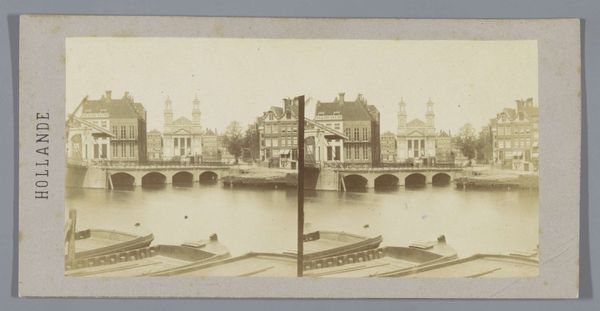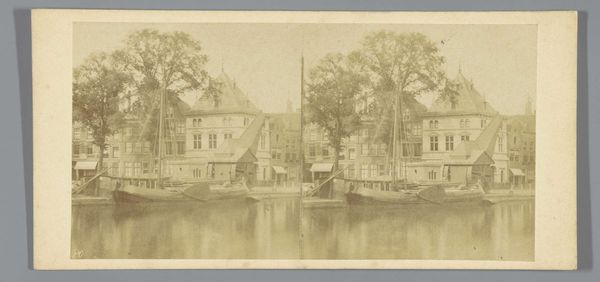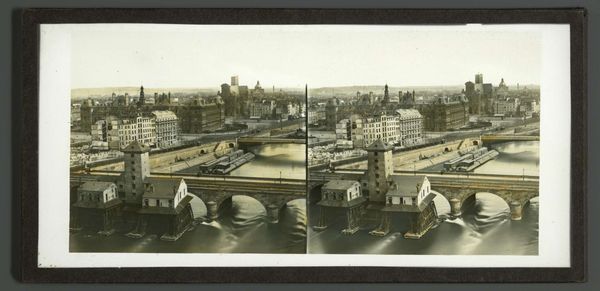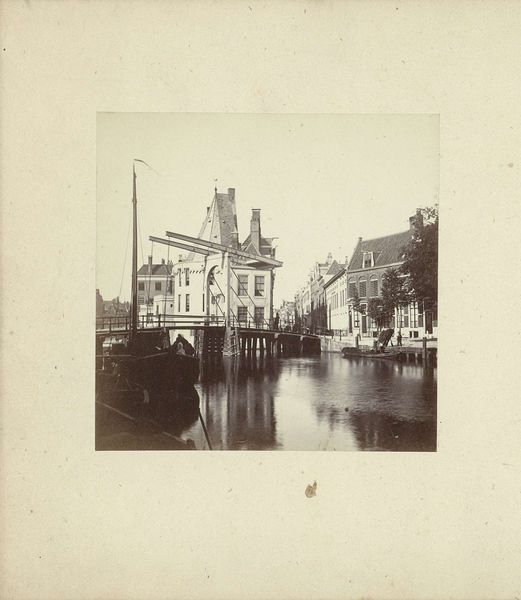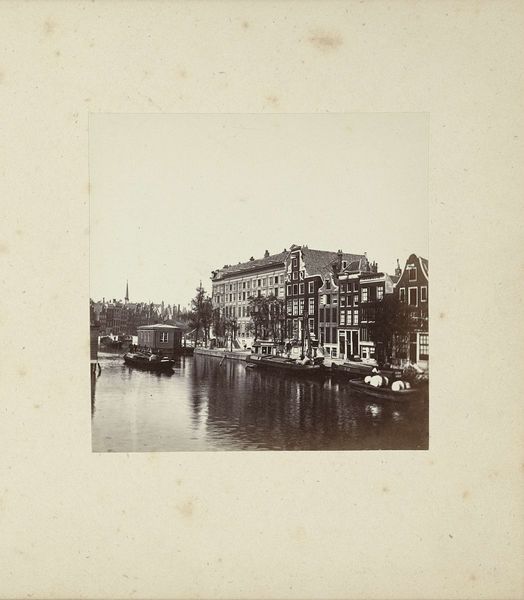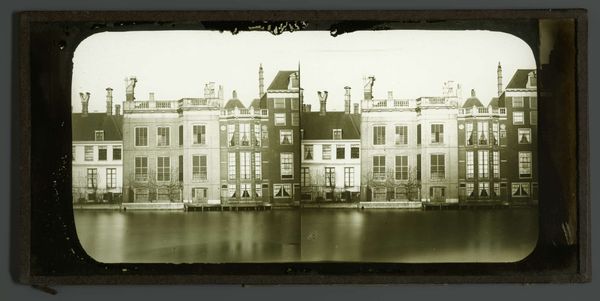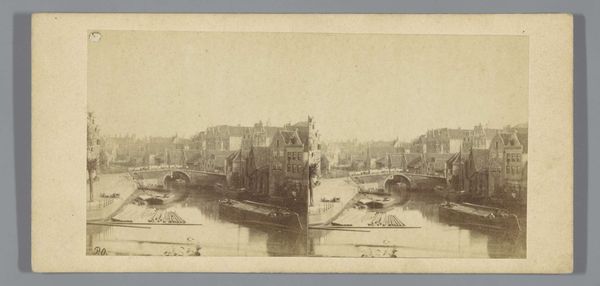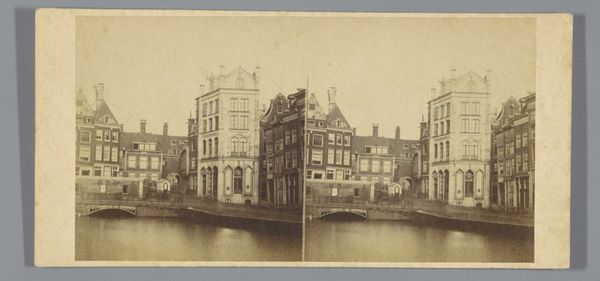
photography, gelatin-silver-print, albumen-print
#
landscape
#
photography
#
gelatin-silver-print
#
cityscape
#
albumen-print
#
realism
Dimensions: height 85 mm, width 170 mm
Copyright: Rijks Museum: Open Domain
Charles-Henri Plaut captured this view of the Amstel River with the Moses and Aaron Church in the distance, using a photographic technique, sometime between his birth in 1819 and his death in 1870. This image exists within a complicated history. During Plaut's life, photography was becoming more accessible, democratizing representation but not necessarily representation by all. As a white European man, Plaut occupied a position of relative power in the nineteenth century. How did this vantage point shape his view, both literally behind the camera and figuratively, as a man in society? Amsterdam was a bustling port city, a center of trade and commerce, but also a place of stark social divisions. The grand architecture along the Amstel, including the Moses and Aaron Church, speaks to the economic prosperity of the Dutch Golden Age. Yet, what stories are not visible here? Whose labor and lives made this prosperity possible? This quiet, almost picturesque scene, invites us to reflect on the complexities of history, to consider whose stories are told and whose are left untold.
Comments
No comments
Be the first to comment and join the conversation on the ultimate creative platform.
